|
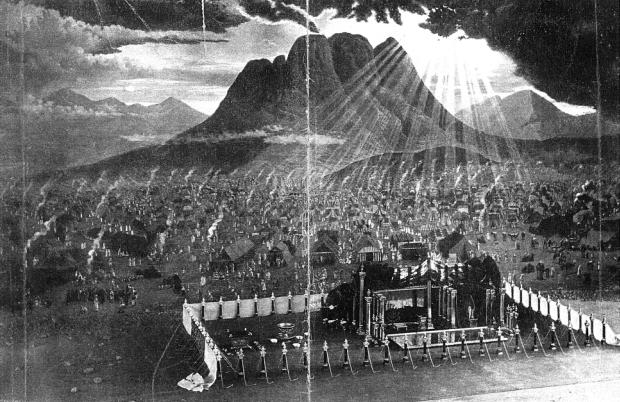
The Tabernacle
The
Tabernacle and encampment as shown here, was reconstructed according
to the studies of John W. Kelchner. The stunning panorama of the
encampment of Israel before Mt. Sinai, was provided by ‘Hills
Incorporation’. The backdrop behind the model is 12 feet high,
and 22 feet long, but overall length required 40 feet.

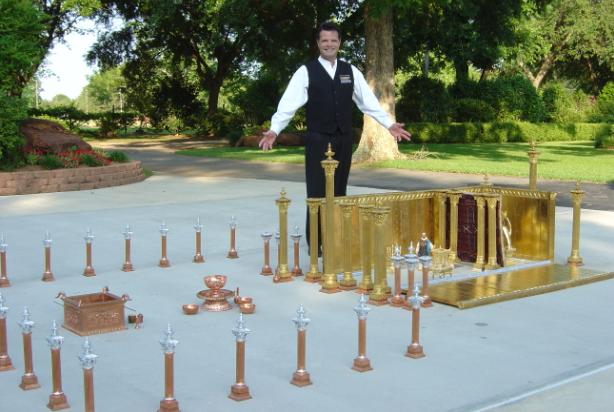
This
is the same desplay as seen today. Below is a
close-up portion of this oil painting, showing its details is
from a post card dated 1896.
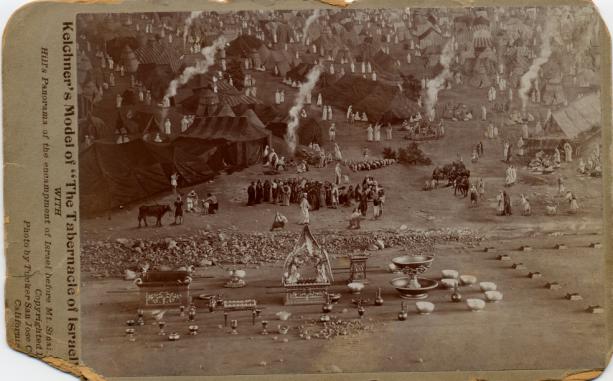
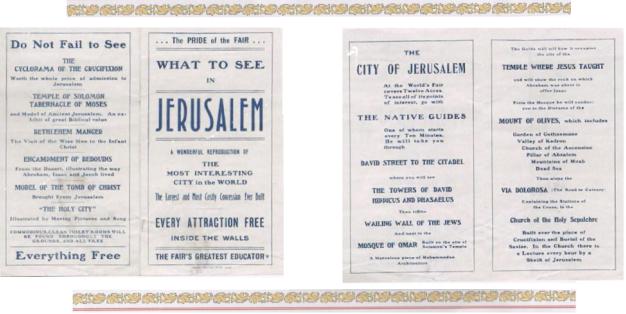
Leaflet:What to see in Jerusalem: a wonderful reproduction of the most interesting city .
History of the Model
This
Tabernacle model by John Kelchner, is said to have been in the,
“WORLD’S COLUMBIAN EXPOSITION” 1892 Worlds Fair in
Chicago. More research is needed to document this claim.
Very
little is known about Dr. Kelchner. We do know that one newspaper
article refers to him being of “Pennsylvania Dutch stock,”
Further study show the his “Doctorate” was more likely
honorary, bestowed on him at some time in the 1930’s, as
previous to that time he was addressed in correspondence as “Mr.”
According to research through “Ancestry.com”, there is on
record a John Wesley Kelchner born in 1843 in Lebanon, PA. An article
from “The Northern Light”, a Freemasonry
magazine dated; August 1993, vol. 24 No. 3, the article entitled:
“Solomon’s Temple in America?”states:At
the beginning of this century, Dr. Kelchner spent approximately 30
years of intensive study determining the exact specifications and
designs for the temple on Mount Moriah. In his studies, Kelchner drew
upon biblical and archaeological, evidence while he taught himself
Hebrew, Latin, and Greek so that he could read documents related to
the temple in their original languages.
If at the turn of the century Dr. Kelchner had already spent 30 years in research, and considering the John W. Kelchner born in 1843 are the same, the years and ages would be as followed: .
John Wesley Kelchner born in 1843 in Lebanon, PA. At the age of 27, he began his research and studies into biblical archaeology. For the next 30 years, in 1900 at the age of 57, he took his information from years of research and sought to build his models. It is said that Dr. Kelchner died around 1939-1940. If he was born in 1843 and died in 1940, Mr. Kelchner was 96 at the time of his death. One letter written in June 1971, refers to Mr. Kelchner as being “very old at the time of his deceased”. Dr. Kelchner was living in New York at the time of his death.
.
In another article from “The World Magazine” January 23, 1927, title of the article: “Palestine invokes modern builders to restore King Solomon’s Temple-cost $50,000,000” reads: .
Dr. John Wesley Kelchner, noted Biblical student and lecturer, who spent thirty years of his life correlating and checking the biblical allusions to the temple, and who at last assembled every bit of information which architects considered necessary to draw, or redraw, the temple plans-much as they would draw plans for a modern New York skyscraper. .
His groundwork thus accomplished, Dr. Kelchner undertook to translate his findings into modern architectural prints. The results of this work was truly astounding. .
In 1926, at the request of the Committee on Social and Educational Service of the Grand Lodge of New York, the A. J. Holman Comp-any of Philadelphia produced a Masonic bible featuring Kelchner”s images of the temple and tabernacle. .
The following is an portion from the Masonic bible published in 1926; .
John Wesley Kelchner, Archaeologist, Bible Student and Lecturer, began thirty years ago to make real his vision of the Scriptural description. .
In 1923 Dr. Kelchner had assemblede all that was needed to erect an exact replica of a Temple which had vanished 3,000 years ago. .
The next step was to vision the entire conception, from the foundation up, in graphic sketches, paintings, working drawings and plans, and, in his New York studio, he surrounded himself with expert draftsmen and capable artists, laying before them the models, plans and designs of this, his life work. As Moses after receiving the Designs of the Tabernacle of Israel called to his aid the “cunning” master mechanic, Bezaleel, who was “filled with the spirit of God in wisdom, in understanding and in knowledge, and a cunning skilled workman, so did John Wesley Kelchner labor with these experts and together they dropped out of the Twentieth Century, back into the years 1011-1004 Before Christ. The difference was only thirty centuries between; the creative objective the same, and the results identical. .
And now the art of our period is enriched by a set of paintings and drawings of unparalleled historic value. Nothing so marvelous of its kind has ever been achieved for the illustration of any subject. The painting and drawings were prepared by the ablest artists of their field in America and Europe. They translate to the layman’s vision the architect’s technical plans as worked out in modern builders’ specifications. .
An essay by John Wesley Kelchner entitled: “A Discription of King Solomon’s Temple and Citadel and the Tabernacle in the Wilderness” preceeds the following illustrations. .
The following paintings and drawing is the product of Kelchners’ work. .
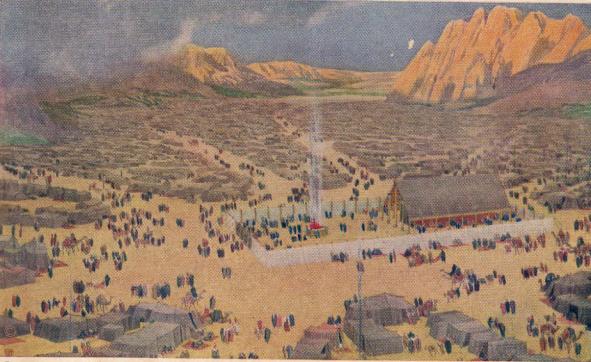
This painting of the Tabernacle in the Wilderness by Kelchner, has a striking resemblance to the 1891 German bible rendering below: .
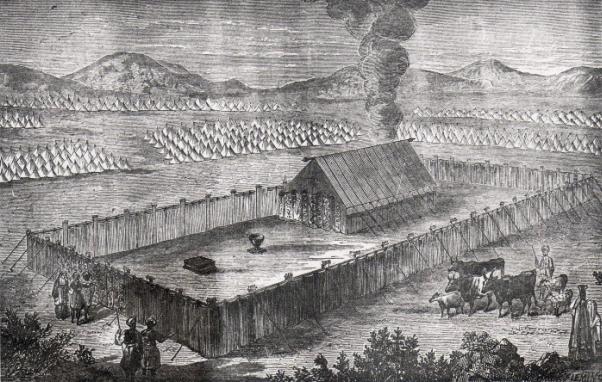
1891 would have been within the period which Mr. Kelchner was making his study on this subject. Notice the similarities between this drawing and the Worlds Fair Model. Could Mr. Kelchner have used this rendering as a source of information?
.
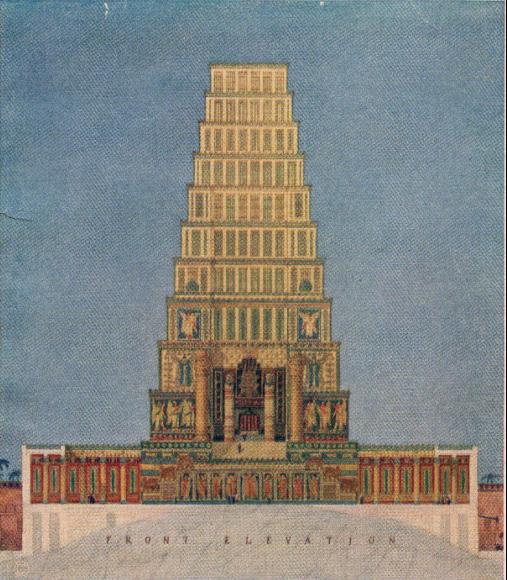
Front elevation .
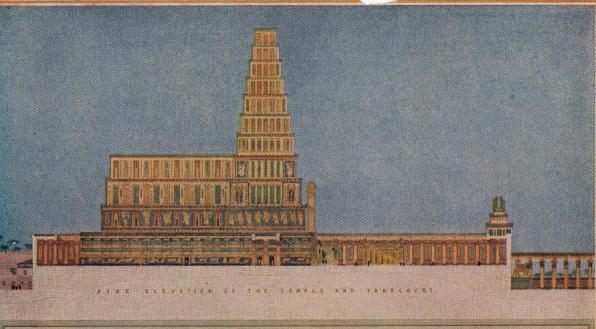
Side elevation .

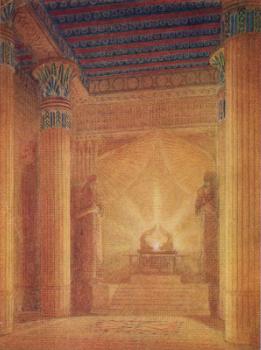
The Holy place, King Solomon’s Temple The Most Holy Place

Interior of King Solomon's Palace, Banquet Scene .
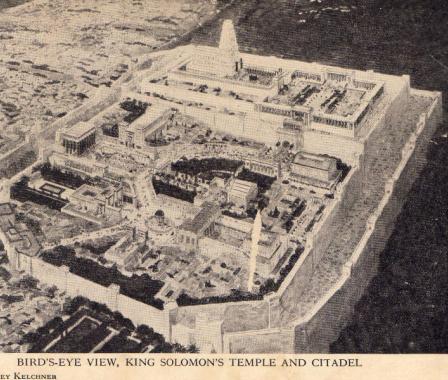
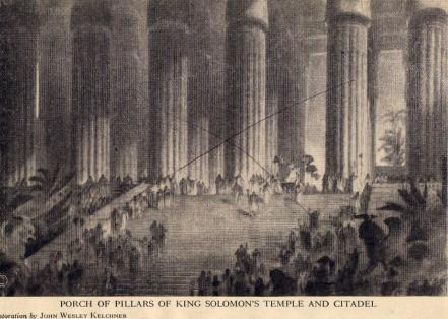
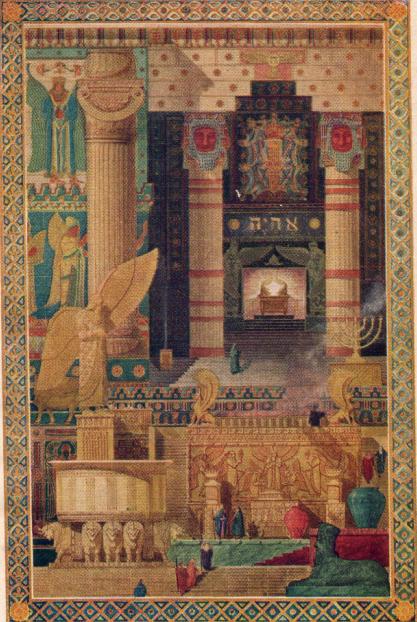

| 